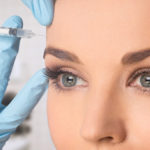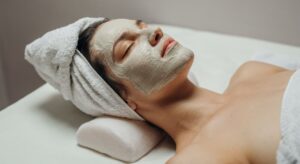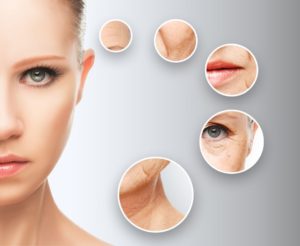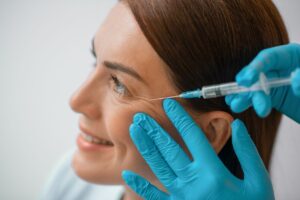In the realm of cosmetic enhancements, there’s frequently a debate about the most effective wrinkle treatment. Among them, the clash between Botox and Dysport attracts particular attention. This article delves into everything you need to know about these wrinkle relaxers, offering a comprehensive comparison and guidance.
What are Wrinkle Relaxers?
An Introduction to Botox and Dysport
Botox and Dysport are wrinkle relaxers that are FDA approved injectable neuromodulators. They’re derived from the botulinum toxin type A and are used to reduce the appearance of fine lines and wrinkles on the face. Essentially, they work by relaxing the specific facial muscles that cause wrinkles, resulting in a smoother and more youthful appearance.
Understanding wrinkle relaxers as injectables
Wrinkle relaxers like Botox and Dysport are injectables meaning they’re injected directly into the target areas with the use of a microfine needle. The injector precisely applies the neurotoxin into the muscle, hence interfering with muscle contractions. This effectively reduces the look of lines and wrinkles such as frown lines or forehead lines.
The Role of Neurotoxins in Wrinkle Treatment
Neurotoxins play a central role in wrinkle treatment. Neurotoxins like botox, dysport, and xeomin work by blocking the nerve signals to the muscle, preventing it from contracting. Thus, with reduced muscle movement, the overlying skin relaxes and remains smoother, ultimately reducing the appearance of wrinkles and giving a more youthful look.
Examining the Botox vs Dysport Debate
Understanding the Difference Between Botox and Dysport
The difference between Botox and Dysport primarily lies in their formulation and area of effect. Dysport is said to be more diluted and tends to diffuse to a larger area compared to Botox. Moreover, Dysport may work quicker and last longer.
Pros and Cons: Botox or Dysport?
Each of them has specific advantages and disadvantages. Botox is popularly known for reducing the appearance of wrinkles, particularly around the eyes and on the forehead. Dysport, on the other hand, might be more beneficial in treating larger areas such as the glabella, due to its ability to spread over a wider area.
Botox vs Dysport: Which Injectable is Right for you?
Choosing the right injectable boils down to individual preference, needs, and the advice of an expert injector. Every patient is unique. Thus, the treatment should be chosen based on the specific area to be treated, the desired result and the physician’s expertise.
Understand the Application of Wrinkle Relaxer Injections
How Injections Take Effect
Once injected, these wrinkle relaxers begin to take effect within a few days by blocking the nerve signals to the targeted facial muscles. This reduces the muscle’s ability to contract, causing the overlying skin to relax and wrinkles to smooth out.
Areas Targeted by Botox and Dysport Injections
Both botox and dysport can be applied to several areas of the face. They are particularly effective at reducing the appearance of forehead lines, frown lines, and lines around the eyes known as crow’s feet. Dysport can also be effective in the glabella, the area between the eyebrows.
How to Maintain Results Post-Injection
To maintain a youthful appearance post-injection, patients are generally advised to avoid strenuous exercise shortly after the treatment, not to lie down for a few hours post-application, and to gently exercise the treated muscles. Regular follow-up injections are also a key part of maintaining the desired results.
Comparing the Duration: Does Botox or Dysport Last Longer?
Longevity of Botox: What Should You Expect?
The effects of Botox can last between three and six months. However, variables like age, facial muscle strength and how active you are could also affect the longevity of Botox’s results.
Durability of Dysport Injections
Dysport shows effects a bit faster than Botox and in some cases, its effects may also last longer. Dysport’s effects can last anywhere between four to six months, in some cases even longer.
Controlling Wrinkles: Are Regular Injections Necessary?
Yes, regular injections are necessary for maintaining the appearance of smooth skin. Both Botox and Dysport wear off with time. Regular treatments help provide consistent results and sustained reduction in the appearance of wrinkles.
Exploring the Alternatives: Botox, Dysport, Xeomin, and More
Comparing Botox, Dysport and Xeomin
Along with Botox and Dysport, Xeomin is another wrinkle relaxer used in the cosmetic industry. Xeomin is often referred to as the ‘naked injectable’ because it contains no additives, making it a more pure version. When comparing Botox, Dysport and Xeomin, it’s essential to consider the area you want to treat, the desired results, and the advice from your health care professional.
Understanding the Differences: Dysport vs Xeomin
The key difference between Dysport and Xeomin is the protein load found in the products. Dysport comes with an additional protein, while Xeomin is free from complexing proteins. The absence of these proteins in Xeomin can make it less likely to cause a reaction or resistance over time.
Looking Beyond Botox: Other Methods to Reduce Wrinkles
Apart from neuromodulator treatments, other methods to reduce wrinkles include facials, chemical peels, laser treatments, dermal fillers, and even natural remedies like essential oils and dietary changes. Each of these options has its pros and cons and should be considered carefully together with professional medical advice.
*Information in this article is not medical advice and may not be factually accurate. It is intended for entertainment purposes only. Consult with a physician before attempting any tips in this blog post and to get the most up to date factual data about any procedure or treatment.














